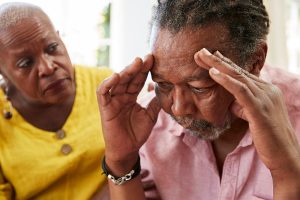The White House coronavirus task force coordinator warned Americans on Sunday that the pandemic has entered a new stage where infections are far more widespread and face masks are crucial to curbing new COVID-19 cases.
“What we are seeing today is different from March and April. It is extraordinarily widespread,” Birx told CNN. “So everybody who lives in a rural area, you are not immune.”
She went so far as to advise people living in the growing number of places where cases are increasing to wear a face mask at home if they are living with someone who is vulnerable to severe COVID-19.
“If you have an outbreak in your rural area or in your city, you need to really consider wearing a mask at home, assuming that you’re positive if you have individuals in your household with co-morbidities,” Birx told CNN.
So far, July has been the worst month, with more than 1.9 million new coronavirus cases recorded. That is nearly 42 percent of the more than 4.6 million reported nationwide since the pandemic began and more than double the number recorded in any other month, data compiled by The New York Times shows. The previous monthly high came in April, when more than 880,000 new cases were recorded.
Coronavirus deaths remain high — over 1,000 for six days in a row, the Times reported.
Alaska, Hawaii, Missouri, Montana and Oklahoma are among the states witnessing the largest surge in infections over the past week, a Washington Post analysis shows. Experts worry about rising case counts in major East Coast and Midwest cities, and they anticipate major outbreaks in college towns as classes resume this month. California saw its worst month yet in July, becoming the first state to pass 500,000 cases.
In San Francisco, one of the first to enact lockdowns in the spring, health officials are seeing a surge in cases and counties are rolling back reopening plans, the Post reported.
A steady rise in complacency is pushing the case count higher, medical experts said. Contact tracers have told public health researchers that people are getting sick after indoor gatherings, the Post reported. Who’s being hit the hardest? Hispanic residents and essential workers, the newspaper said.
California is experiencing a dramatic surge in cases, mostly concentrated in the southern part of the state. Gov. Gavin Newsom rolled back reopening plans in July, ordering all bars and indoor dining closed for the entire state, and gyms, hair salons and houses of worship shuttered for at-risk counties, the Post reported.
Final-phase vaccine tests underway
On the vaccine front, the final phases of testing for two potential COVID-19 vaccines have been launched.
In one trial, the first of 30,000 volunteers will be given either a vaccine developed by Moderna Inc. and the U.S. National Institutes of Health or a placebo shot, the Post reported.
Pharmaceutical giant Pfizer has also announced that it was starting a 30,000-person final phase vaccine trial, to be conducted at 120 sites globally.
Fauci predicted that researchers would probably be able to tell whether the Moderna vaccine was effective by November or December, although he added that it was a “distinct possibility” an answer could come sooner. Pfizer officials have said the company expects to be able to seek regulatory authorization or approval for its vaccine by October, the Post reported.
As cases have surged and testing delays have followed, contact tracing is becoming irrelevant in many parts of the country.
In many cities in Florida, a state which has seen soaring cases counts in the past month, officials have largely given up on tracking cases, and the situation is equally grim in California, the Times reported.
“I think it’s easy to say contact tracing is broken,” Carolyn Cannuscio, an expert on the strategy and an associate professor of family medicine and community health at the University of Pennsylvania, told the Times. “It is broken because so many parts of our prevention system are broken.”
By Monday, the U.S. coronavirus case count passed 4.6 million as the death toll passed 155,000, according to a Times tally.
According to the same tally, the top five states in coronavirus cases as of Monday were: California with nearly 516,000; Florida with over 487,000; Texas with nearly 453,000, New York with over 421,000, and New Jersey with more than 184,000.
Nations grapple with pandemic
Elsewhere in the world, the situation remains challenging.
In Australia, the premier of Victoria declared a “state of disaster” on Sunday, announcing even stricter lockdown measures, introducing a nightly curfew and banning virtually all trips outdoors after Australia’s second largest state recorded 671 new infections in a single day.
“We have to do more, and we have to do more right now,” said Premier Daniel Andrews. “Where you slept last night is where you’ll need to stay for the next six weeks.”
Things continue to worsen in India. On Monday, the country passed 1.8 million infections and over 38,000 deaths, a Johns Hopkins tally showed. The surge comes weeks after a national lockdown was lifted, and it’s prompted some parts of the country to revert back to stricter social distancing measures. Only the United States and Brazil have higher caseloads.
Brazil is also a hotspot in the coronavirus pandemic, with over 2.7 million confirmed infections by Monday, according to the Hopkins tally. It has the second-highest number of cases, behind only the United States.
Cases are also spiking wildly in Russia: As of Monday, that country reported the world’s fourth-highest number of COVID-19 cases, at nearly 854,600, the Hopkins tally showed.
Worldwide, the number of reported infections passed 18 million on Monday, with over 689,000 deaths, according to the Hopkins tally.
More information
The U.S. Centers for Disease Control and Prevention has more on the new coronavirus.
Source: HealthDay
Copyright © 2025 HealthDay. All rights reserved.

















